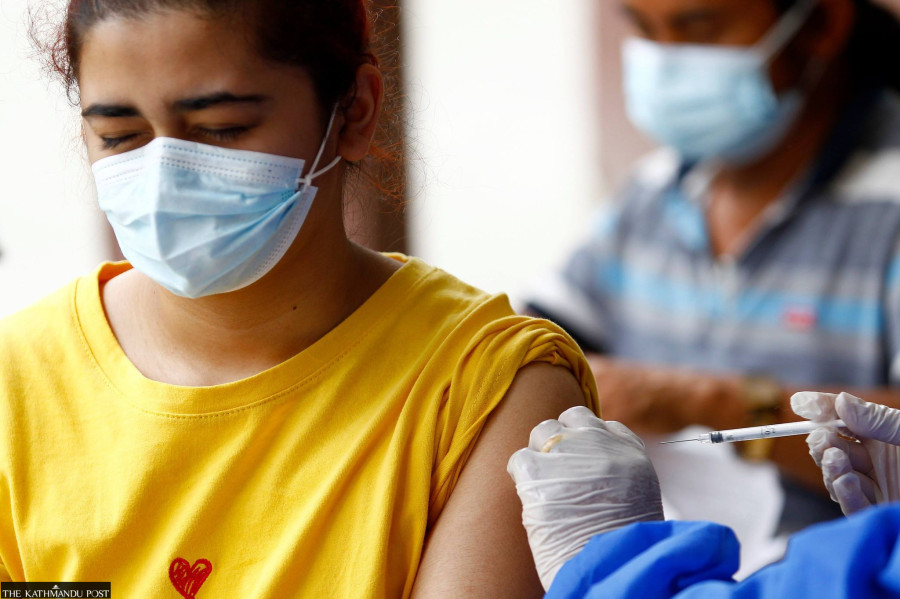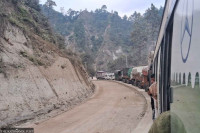Editorial
Getting there, slowly
The government should discourage people from gathering in big crowds as markets reopen.
The government on Monday began yet another iteration of the vaccination drive with the arrival of 4.4 million doses of the Vero Cell vaccine from China. During this phase, the government plans to vaccinate all students above 18 years of age. That is a commendable decision considering how students have been victims of the government's inability to streamline its vaccination efforts. As colleges and universities press for conducting in-person classes and exams, the students have had to undergo considerable psychological distress as they are caught between continuing their studies and staying safe at home.
With the availability of the new vaccines, the government plans to provide vaccines to all people above 40 years in Kathmandu Valley and a few other districts while the rest of the districts will provide the vaccine to all people above 45 years. All eligible people from Manang, Mustang and Rukum districts have been fully vaccinated, and the government wants to vaccinate all eligible people from 10 more hill districts, where the population is small and scattered. Having learnt its lesson from the past, the government has also started rationing the vaccines in a manner that guarantees that those who have received the first dose receive the second dose in time.
After a series of missteps, especially by the previous government, the vaccination drive is taking considerable pace. However, the idea of fully vaccinating the population of one district at a time is not an ideal plan for vaccination, considering the high number of cases in major cities. With 392 new infections in the past 24 hours, Kathmandu Valley remains the most vulnerable place in the country in terms of new transmissions. Vaccinating people in places that are coronavirus hotspots would, therefore, be the most logical way to ensure that the vaccines work and prevent new transmissions or lessen morbidity. Even today, there are 10 districts that have over 500 active cases each, and 20 districts that have 200 active cases each. These are the districts that should be prioritised for vaccination. And if we do not have enough vaccines for these districts, the most logical step is to fast-track the procurement of more doses.
Monday saw 975 new cases and eight new deaths, reaching a total of 785,541 transmissions and 11,048 deaths. This is, in fact, the time when we should continue to be careful not to let our guard down. If history is any lesson, we should remember that the second wave of the pandemic arrived right after we started to become lenient. And the price we paid during the second wave was too high, considering the astounding number of deaths and transmissions each day. There were as many as 246 deaths at the peak of the second wave on May 19, leaving the country devastated and scared. The number of deaths and transmissions has come down these days, but this does not mean that the pain of those who have lost their loved ones or those who have suffered the virus is any less.
As economic activities resume in full swing after months of lull, and as the festival season sees increased gathering of people, the danger of the coronavirus remains. With just around 19 percent of the total population fully vaccinated and around 21 percent partially vaccinated, we are a long way from being safe. The government must continue to inform the people about the need to maintain optimum safety rules and discourage people from gathering in big crowds. There is no stopping a third wave once it comes knocking on our doors. The time to ensure our safety is now.




 6°C Kathmandu
6°C Kathmandu














